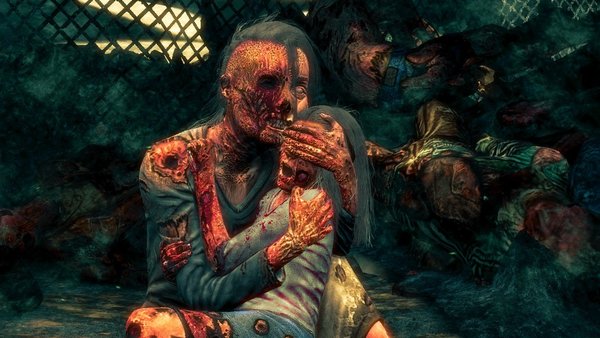No, We Won't Shut Up About Spec Ops: The Line
The Scene You've All Been Waiting For

Of course the story's true gut-punch twist comes from the infamous white phosphorus scene which occurs in Chapter 8: The Gate. The gameplay is eerily reminiscent of COD4's Death From Above mission, and may well be a direct response to it. As such, it's necessary to first talk about Death From Above. In that mission (interestingly also the 8th mission of the game), the player is in command of an AC-130 gunship, and is tasked with clearing a path for Captain Price and his SAS unit to reach an evac point.
When I first played COD4, I was impressed by the unglamorous presentation of that mission: the eerie near-silence of it all, underpinned by the drone of the gunship's engines and punctuated only by matter-of-fact orders from the fire control officer, all viewed by a grainy black-and-white CRT monitor. It felt more like watching a piece of upsetting newsreel footage than an exciting set piece and to its credit, that's an effective bit of presentation.
However, when compared with Spec Ops' take on this, we come to realise how uncritical Death From Above was. It's implied that not a single civilian was hurt in the aerial bombardment (likely impossible due to the sheer amount of munitions rained down on the Russian countryside), and once Captain Price et al are evacuated, the player is whisked off to the Middle East for another round of terrorist-shooting, with nary a glimpse at the burning landscape left behind.
Death From Above's aforementioned near-silence only emphasises our detachment and literal distance from the horror unfolding on the ground, a consequence-free massacre from a position of untouchable superiority. Walker's bombardment, in contrast, happens from just a few dozen yards away, and is set to a cacophony of terrified and agonised screams from the targets below. While the player engages in the strike, tasked with prioritising heavy artillery and anti-air weaponry, Walker's face can be seen in the reflection of his monitor, staring coldly back at us like a dark mirror image of we the player.
Once the area is secure and the smoke clears, we're not afforded a quick cut to the next exciting confrontation. Instead, we're confronted with the aftermath of our actions. We wade through the charred, dismembered bodies of our victims, clinging to life, blinded and pleading for help, while toxic glowing particles hang in the air. The final kicker, which we've discussed countless times, is that the large group of entrenched enemies furthest from us was in fact a group of civilians being evacuated by the 33rd.
The image of a mother, fruitlessly attempting to shield her child from the incoming devastation, is one of the most haunting and now iconic pieces of iconography in video game history. Bathed in an almost too-perfect spotlight, a distinct lack of other bodies around her, she is composed chillingly like a Renaissance depiction of Madonna and Child. While Walker looks on in stunned silence, Lugo screams "This is your fault, god damnit!" whilst pointing not at Walker but the player themselves. Turning back to his men, Walker coldly remarks: "We need to keep moving", a statement that will echo throughout the game's runtime.